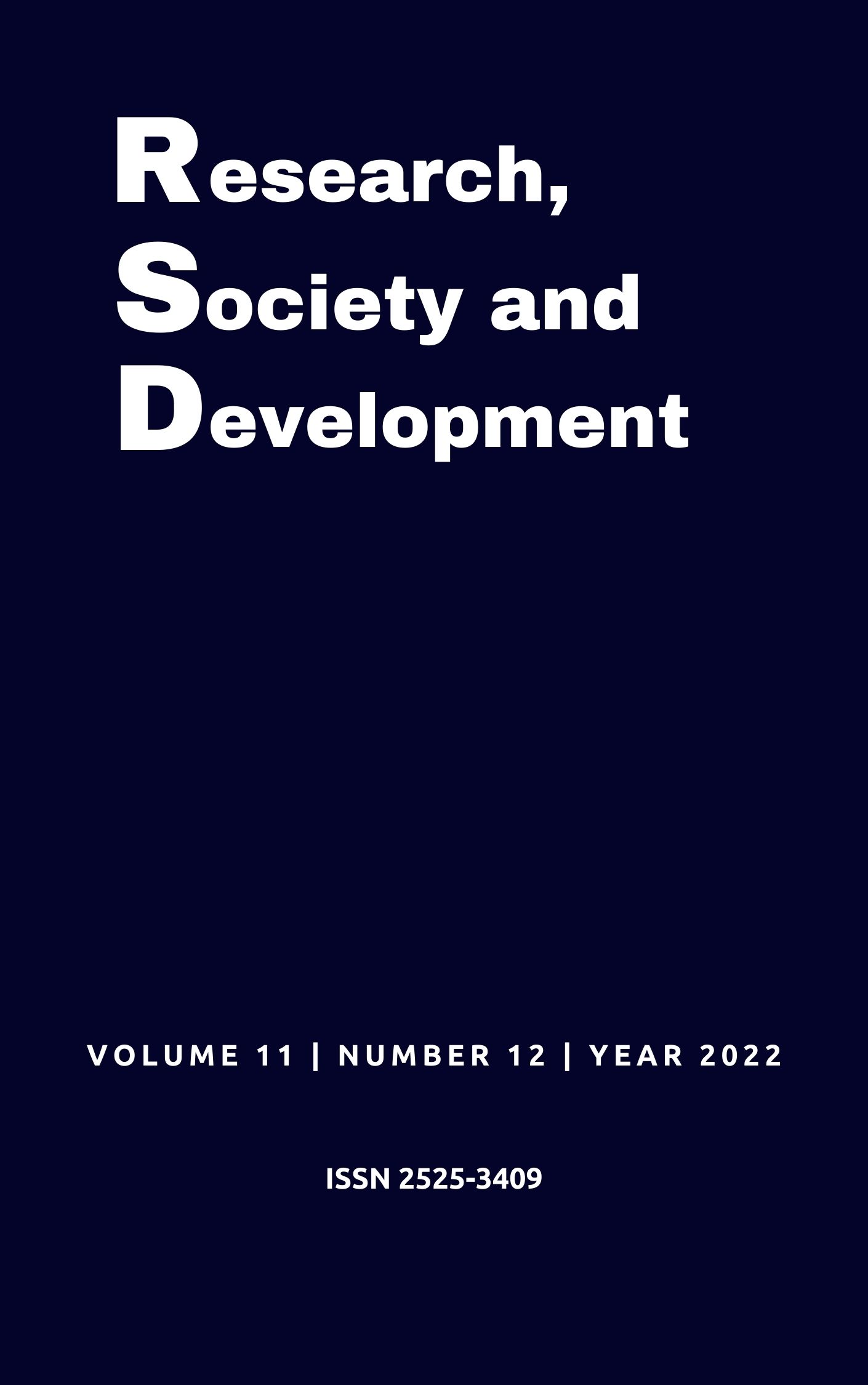The contributions of the use of pencil and paper for the teaching and learning of geometry in high school
DOI:
https://doi.org/10.33448/rsd-v11i12.35224Keywords:
Geometric visualization, Geometry, Mathematical investigation, Teaching, Pencil and paper.Abstract
This article is an excerpt from the master's research entitled "From pencil and paper to augmented reality: a proposal for teaching geometric visualization", which aims to analyze the possible contributions of a proposal for teaching geometric visualization based on mathematical and scientific research. using different teaching resources. Here, we analyze the contributions of activities developed only with pencil and paper for the teaching and learning of geometry. Participated in this research 16 students from the 3rd grade of high school, living in Guaçuí - ES. The use of this resource aroused little interest among students. Material limitations (2D representation of 3D objects) made it difficult, for example, to observe intersections between figures. The activity allowed contemplating the following skills: figure-ground perception; mental rotation and visual discrimination. The following skills were not covered: perceptive constancy; perception of spatial positions and perception of spatial relationships. Finally, activities with pencil and paper have the following advantages: they are easy to perform; stimulate students' creativity and help to develop students' drawing skills. We conclude that the use of a simple resource, such as pencil and paper, can contribute to the development of important skills in students.
References
Becker, M. (2009). Uma alternativa para o ensino de Geometria: Visualização Geométrica e representações de sólidos no plano. 111 p. Dissertação. https://www.lume.ufrgs.br/handle/10183/17161.
Bogdan, R. C. & Biklen, S. K. (1994). Investigação Qualitativa em Educação: uma introdução à teoria e aos métodos. Porto Editora. 336 p.
Bortolossi H. J. (2020). Movimentos, Pensamentos e GeoGebra: alguns aspectos neurocientíficos no ensino e aprendizagem da Matemática. In: Basniak, M. I. & Rubio-Pizzorno, S. (2020). Perspectivas teórico-metodológicas em pesquisas que envolvem tecnologia na Educação Matemática: o GeoGebra em foco. https://www.academia.edu/44833466/Perspectivas_te%C3%B3rico_metodol%C3%B3gicas_em_pesquisas_que_envolvem_tecnologia_na_Educa%C3%A7%C3%A3o_Matem%C3%A1tica_o_GeoGebra_em_foco.
Brasil. (1999). Parâmetros Curriculares Nacionais: Matemática. Brasília: MEC/SEF. http://portal.mec.gov.br/seb/arquivos/pdf/livro03.pdf.
Fainguelernt, E. K. (1996). Representação do conhecimento geométrico através da informática. 249 p. Tese. https://www.cos.ufrj.br/uploadfile/1339609295.pdf
Fonseca, E. A. A. (2014). Metodologia para auxiliar professores de matemática no processo de seleção de conteúdos digitais. 118 p. Dissertação. http://www.ufjf.br/mestradoedumat/files/2011/05/Dissertacao_Elias_versao-final_2014_06.pdf.
Fonseca, H., Brunheira, L. & Ponte, J. P. (1999). As actividades de investigação, o professor e a aula de Matemática. Actas do ProfMat 99. Lisboa: APM. http://docplayer.com.br/35546123-As-actividades-de-investigacao-o-professor-e-a-aula-de-matematica.html.
Fonseca, M. C. F. R. et al. (2001). O ensino de Geometria na Escola Fundamental - Três questões para a formação do professor dos ciclos iniciais. Autêntica.
Gazire, E. S. (2000). O não resgate das geometrias. 217 f. Tese. http://www.repositorio.unicamp.br/handle/REPOSIP/252634.
Gutierrez, A. (1998). Las representaciones planas de cuerpos 3-dimensionales em La enseñanza de la geometría espacial. Revista EMA n. 3, v.3 p.193-220.
Gutierrez, A. (1996). Visualization in 3-Dimensional Geometry: In Search of a Framework. http://www.uv.es/Angel.Gutierrez/archivos1/textospdf/Gut96c.pdf.
Lorenzato, S. (2006). O laboratório de ensino de matemática na formação de professores. Coleção formação de professores.
Maragoni, A. C., Geron, A. C. & Coelho, L. M. F. R. (2021). Lacunas no ensino da Geometria Euclidiana. http://legacy.unifacef.com.br/novo/publicacoes/IIforum/Textos%20EP/Lucinda,%20Antonio%20Cesar%20e%20Antonio%20Carlos%20.pdf.
Matos, J. M. & Gordo, M. F. (1993). Visualização espacial: algumas actividades. Educação e Matemática, (26), 13-17.
Minayo, M. C. S. (1994). O desafio do conhecimento: pesquisa qualitativa em saúde. Hucitec.
Pavanello, R. M. (1989). O abandono do ensino da Geometria: uma visão histórica. 210 p. Dissertação. http://repositorio.unicamp.br/jspui/handle/REPOSIP/252057
Ponte, J.P., Serrazina, L., Guimarães, H. M., Breda, A., Guimarães, F., Sousa, H., Menezes, L., Martins, M. E. & Oliveira, P. A. (2007). Programa de Matemática do Ensino Básico. Lisboa. Direção Geral da Inovação e Desenvolvimento Curricular.
Rosa, T. C P. (2022). Do lápis e papel à realidade aumentada: uma proposta de ensino de visualização geométrica. 162 p. Dissertação. https://repositorio.ifes.edu.br/handle/123456789/2061.
Settimy, T. F. O. & Bairral, M. A. (2020). Dificuldades Envolvendo a Visualização em Geometria Espacial. VIDYA, 40(1), 177-195, jan./jun., 2020. https://periodicos.ufn.edu.br/index.php/VIDYA/article/view/3219/2530
Silva, J, E. et al. (2016). A geometria espacial trabalhada a partir da construção de sólidos geométricos. Anais IX EPBEM. Realize Editora. https://www.editorarealize.com.br/index.php/artigo/visualizar/26381.
Downloads
Published
Issue
Section
License
Copyright (c) 2022 Thiago Cézar de Pádua Rosa; Rony Cláudio de Oliveira Freitas

This work is licensed under a Creative Commons Attribution 4.0 International License.
Authors who publish with this journal agree to the following terms:
1) Authors retain copyright and grant the journal right of first publication with the work simultaneously licensed under a Creative Commons Attribution License that allows others to share the work with an acknowledgement of the work's authorship and initial publication in this journal.
2) Authors are able to enter into separate, additional contractual arrangements for the non-exclusive distribution of the journal's published version of the work (e.g., post it to an institutional repository or publish it in a book), with an acknowledgement of its initial publication in this journal.
3) Authors are permitted and encouraged to post their work online (e.g., in institutional repositories or on their website) prior to and during the submission process, as it can lead to productive exchanges, as well as earlier and greater citation of published work.


